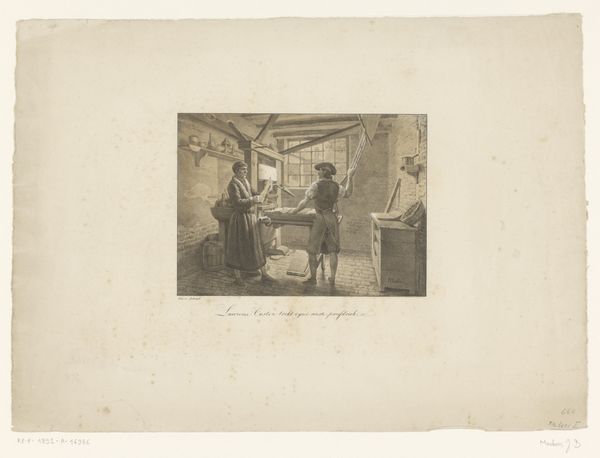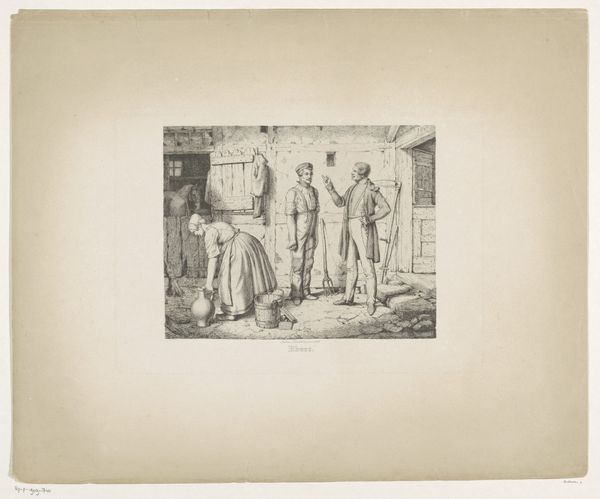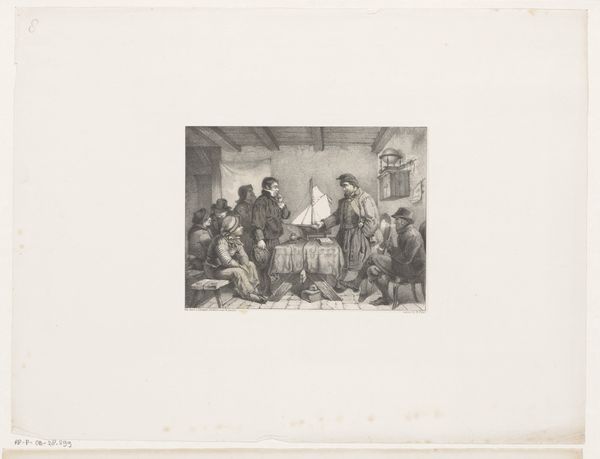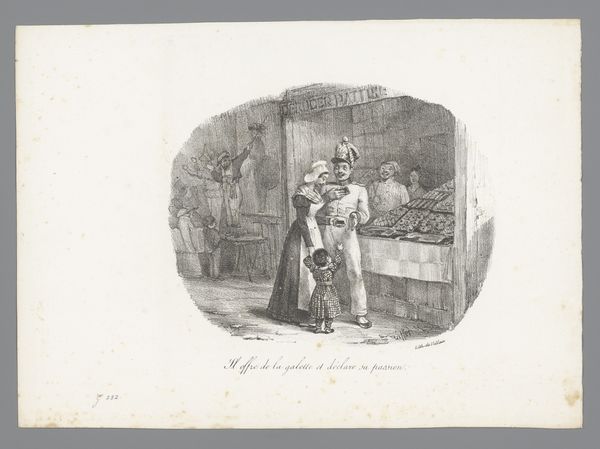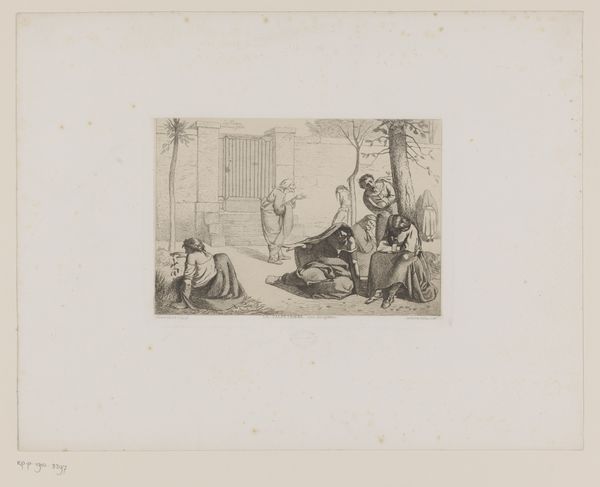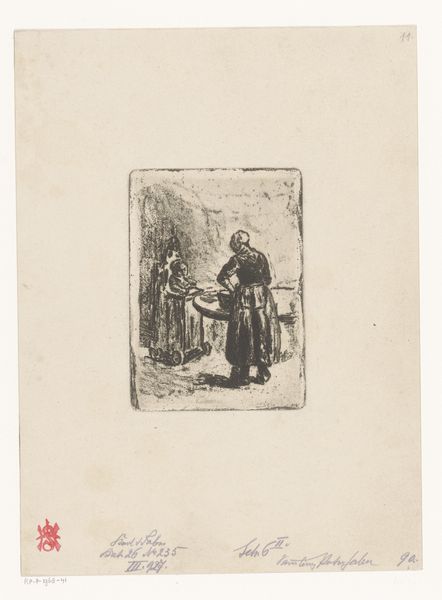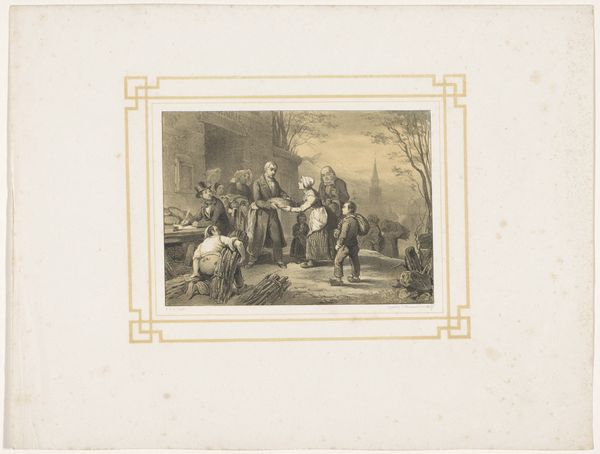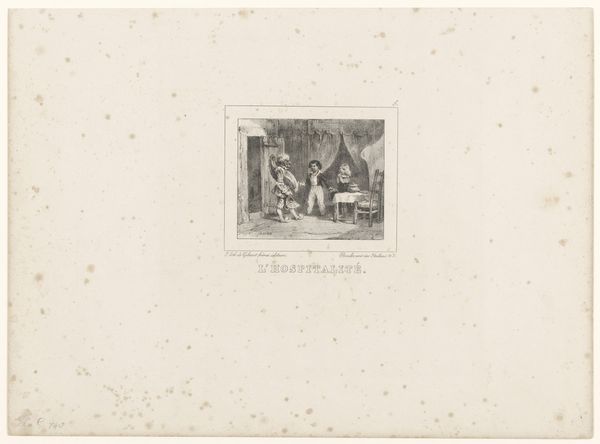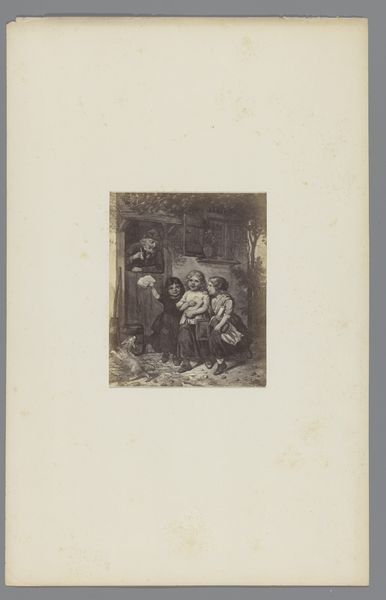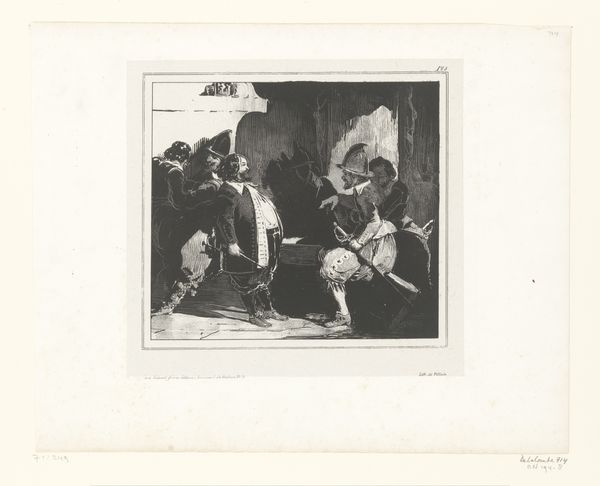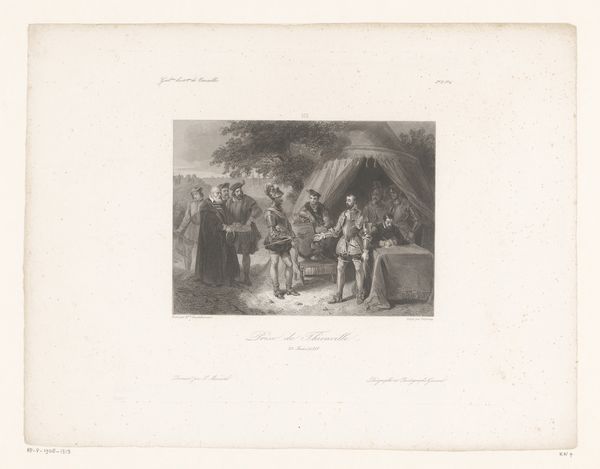
Dimensions: Plate: 5 9/16 × 8 9/16 in. (14.2 × 21.8 cm) Sheet: 12 1/2 × 19 11/16 in. (31.8 × 50 cm)
Copyright: Public Domain
Editor: George Cruikshank's "Looking for Lodgings," an engraving from 1851, depicts a group of figures peering into what looks like a rather dismal room. The cramped space and the woman holding a candle create a sense of voyeurism. What story do you think Cruikshank is telling here? Curator: It’s important to view Cruikshank within the context of his time. He was working in an era where social commentary, particularly in print, reached a wide audience. Looking at this, the very act of "looking for lodgings" suggests a specific social stratum. We are seeing a portrayal of those struggling with housing insecurity, likely immigrants or the working class, wouldn’t you agree? Editor: Yes, I think so. The figures appear cautiously hopeful, perhaps naive about the reality of their options. Is it too far to say it’s a social critique? Curator: Absolutely, Cruikshank consistently engaged with the realities of poverty and urban life in Victorian England. The crowded composition emphasizes a lack of space, visually reinforcing their predicament. Consider the role of the Metropolitan Museum of Art in preserving such a work today. What purpose do you imagine this piece would have for the modern museum-goer? Editor: Perhaps to invite reflection on persistent social problems, to recognize echoes of the past in present circumstances? I initially focused on the figures' expressions but your perspective broadened it, making me consider the broader social implications. Curator: Indeed. And consider, even the act of displaying this artwork implicates the institution in a complex socio-political discussion. These historical artworks become prompts to analyze our present realities and how we interpret history. Editor: I hadn't considered the role of museums themselves! Thanks for shifting my perspective.
Comments
No comments
Be the first to comment and join the conversation on the ultimate creative platform.
